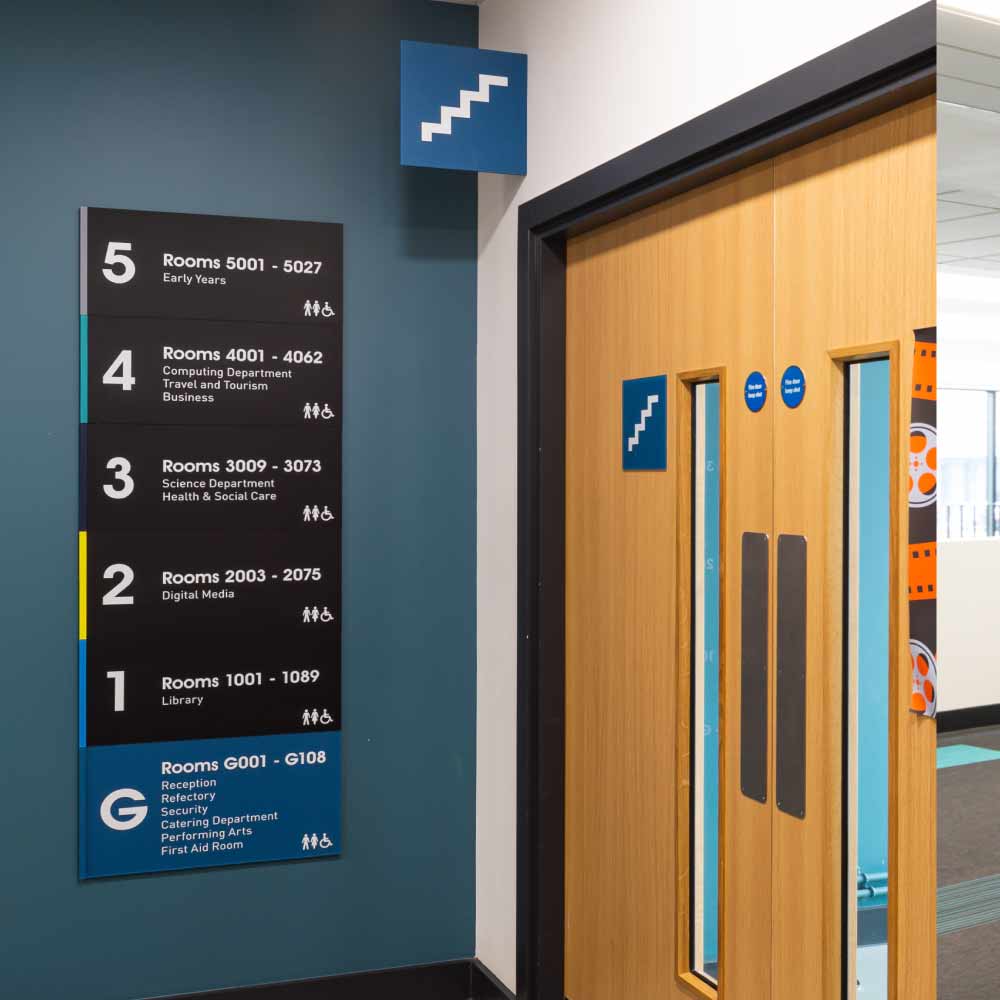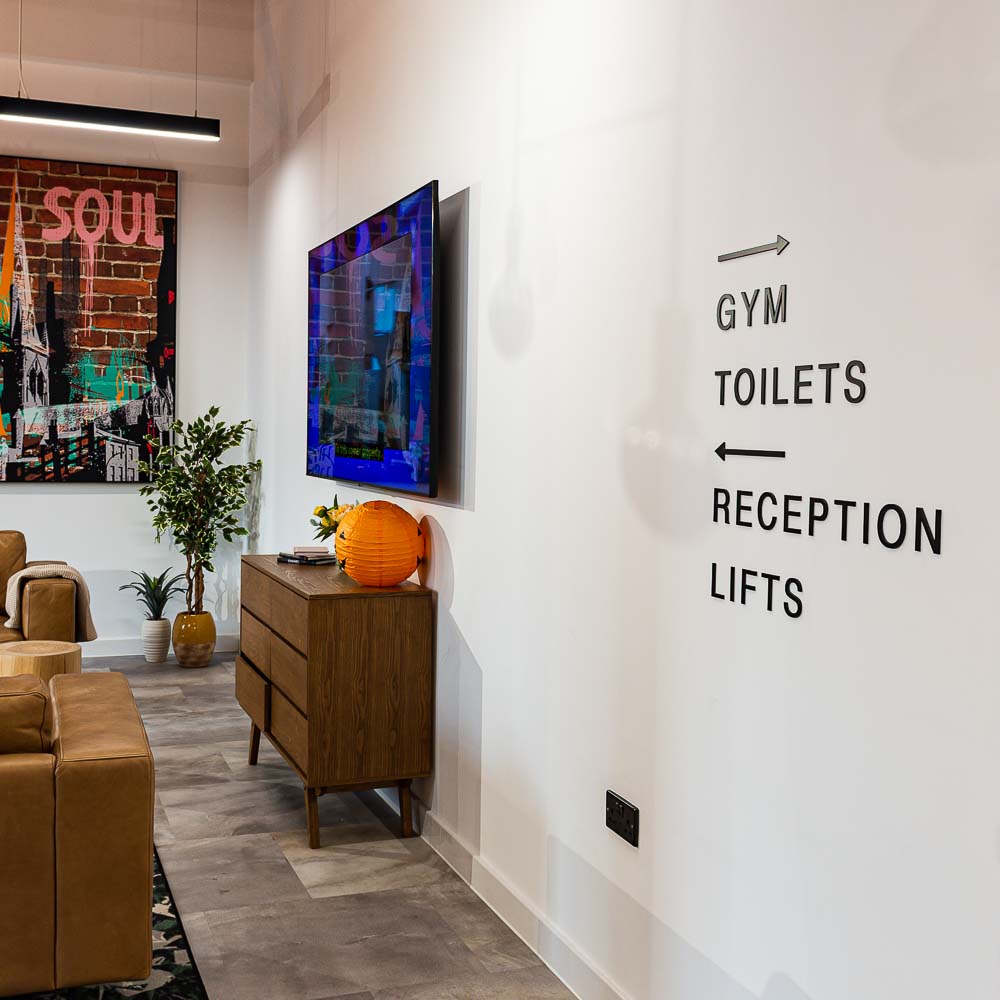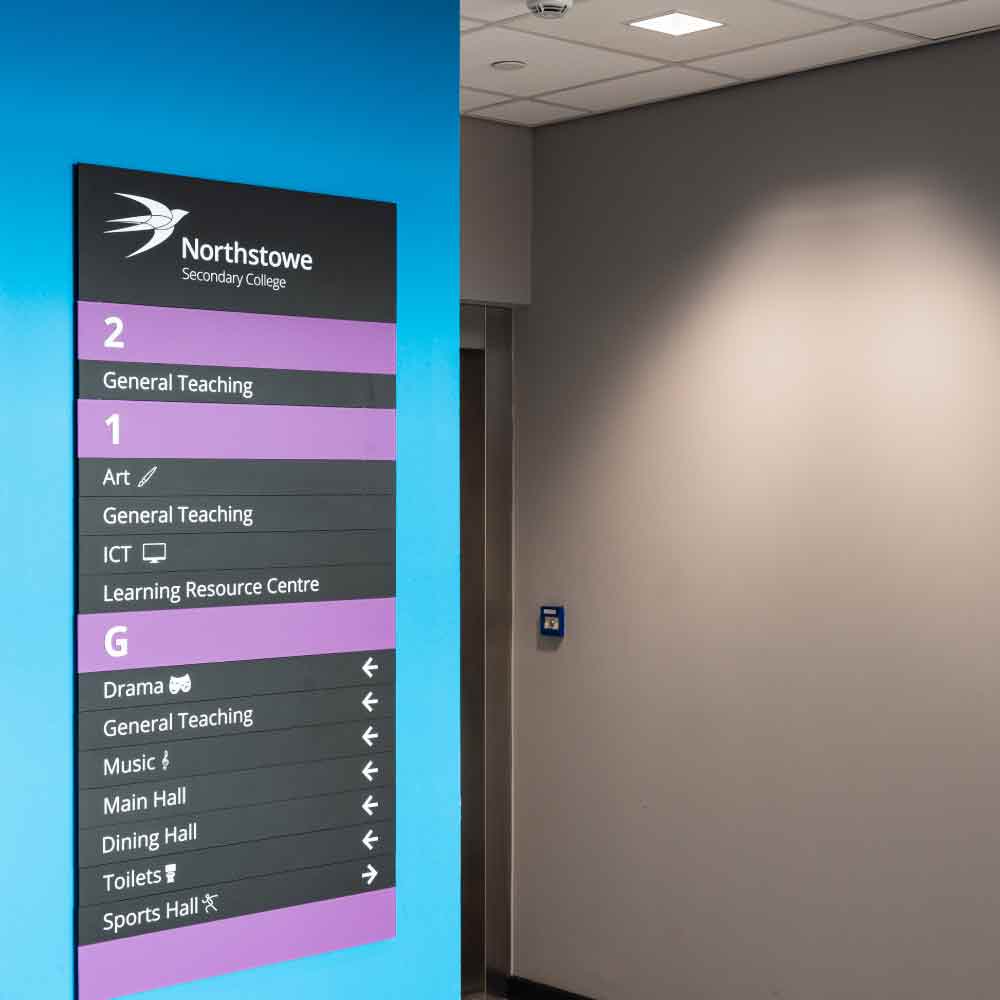Part One – location and simplicity
This is part one of a two-part series.
Wayfinding signage is one of the most important parts of a good customer experience. Regardless of the setting, customers being unable to find their destination or navigate around an area contributes to a great deal of frustration. Part of creating wayfinding signage is putting yourself in the customers shoes and determining what their needs are.
The most effective wayfinding signage is designed with these five principles in mind. The signage should always be:
- Ideally Located
- Simple and Concise
- Accessible to All
- Relevant and Appropriate
- Tested Thoroughly
All these principles work together and separately to form a good strategy. At xsign we put these principles into practice each time we create wayfinding signage. We’re experts in signage design and are always happy to share our knowledge. In this two part blog we’ll go into a bit more detail about our process.
Choosing the right location for your wayfinding signage
Location is vital to an effective wayfinding signage strategy because the signage is a navigational tool that needs to help, and not hinder, visitors. Before you place signs anywhere, you need to be fully aware of the actual floor plan of the area and the most sensible paths for visitors to take. Thinking about the routes means you will know the ideal places to put signs. You want to avoid visitors being directed down a complex route if there is a simpler or quicker one, they could take. Thinking about the location of signage should also include how far away from the place a visitor will be when they need the sign. You don’t want someone seeing the sign for the toilets after they have walked past them.
Think about people coming from different directions; don’t just place signs on the way to somewhere, but also the way back out. A key point with location is that visitors not only need to know where they are going, but also where they are. This is because routes must have a beginning and an end. How will your visitors know they have reached their destination if the location isn’t signposted?
For example, a patient leaves A&E and follows the signs to the x-ray department. The signs stop after a while because the x-ray department itself wasn’t signposted and the patient has walked past it. This would be avoided if the whole journey of the patient was considered and the locations for signage carefully planned.


How can effective wayfinding signage still be simple?
The most effective wayfinding signage is simple and easy to understand and follow. Design elements should include a simple font that is big enough for visitors to see and uses contrasting colours, so it is easy to read. Adding icons to a sign gives context to the words and resolves the need for lots of languages on the sign. Even in places like airports, you don’t want a lot of different languages on the signage as it can become overwhelming. Ideally your customers just want to be able to glance at a sign and understand it quickly.
Keeping signage simple should include consistency as well. For example, if a hospital map refers to the “Eye Department” but some of the signs called it “Ophthalmology” that will be confusing for patients. Keeping the terminology consistent will make journeys simpler for visitors. In addition, keeping signage simple includes not overcrowding areas with signs. Even the most complex of buildings can have simple signage if it is designed well. What you want to avoid is having too many different signs in one place, especially if they are all different sizes or shapes. It is better to have one large sign designed well, then lots of signs confusing people.
Designing an effective wayfinding strategy depends on good locations and simple designs that can still communicate a message well. In the next blog we will look at how the accessibility and relevance of signage contribute to the overall effectiveness. We’ll also share some tips for testing your wayfinding signage.


